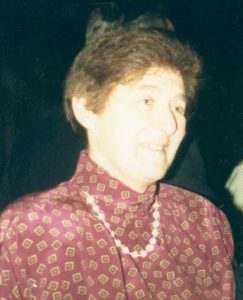In memory of Jill Franklin (1928 ~ 1988)

Obituary from The Guardian, Friday 1 April 1988
THE death of Jill Franklin at only 59 has robbed the world of architectural history of one of its most distinguished practitioners.
The daughter of a senior civil servant in the Treasury she read Greats at St. Hugh’s College, Oxford and subsequently worked as a typographer and designer for Chatto and Windus. She married Norman Franklin of Routledge and Kegan Paul in 1953, and it was while their four children were growing up that she began the study of art history as an extra mural student of the University of London, by way of an intellectual diversion. Her exceptional ability was swiftly recognised by Margaret Whinney, and she went on to study for a Ph.D. at the Courtauld under the supervision of Nikolaus Pevsner.
The thesis she wrote then on the planning of the English country house became the basis of The Gentleman’s Country House and its Plan 1835-1940, published in 1981, a scholarly and exhaustive study. She described the refinements of planning which followed the polarisation of society into distinct classes, and the changing manners and the developing domestic technology of the time.
The research for this involved the study of the architects’ drawings, house visiting, and interminable reading of professional periodicals and building magazines, as well as the literature and many volumes of reminiscences written during this period. All this material was analysed, the houses separately described, and their plans meticulously redrawn to scale. It is a book which is constantly referred by her fellow architectural historians and those studying the sociology of the nineteenth and early twentieth centuries.
In 1973 she took up the post of tutor in the history of art and architecture with the Extramural Department of London University and later became a voluntary worker with the Camden Bereavement Service. Despite these calls upon her | time she was an enthusiastic member of the Victorian Society and organised each year memorable expeditions to country houses, during which the members were encouraged to contribute to a continuing discussion of planning and design. The care she took in arranging these visits made them most instructive and enjoyable, and they were always over-booked. She had recently been working on a new book on the development of lodges and gatehouses which promised to be as widely researched and innovative as that on the country houses. and it is sad that this cannot now appear.
ill Franklin will probably be best remembered by her colleagues for her constant encouragement and readiness to talk over either major problems of interpretation of material, or interesting snippets of information which might turn out to be of importance. The value of such a friend is hard to express. She was greatly loved and is missed dreadfully.
Jill Allibone
In 1980 she was operated on for cancer, and in 1988 she died of septicaemia brought on by the lack of lymphatic glands in the armpit just after her 35th wedding anniversary, and just before her 60th birthday.